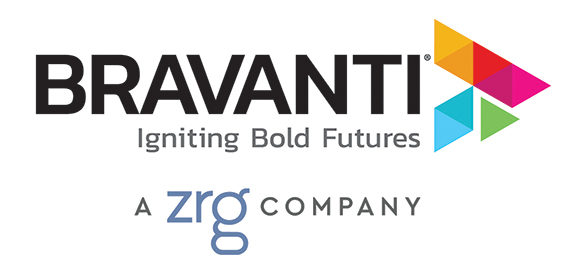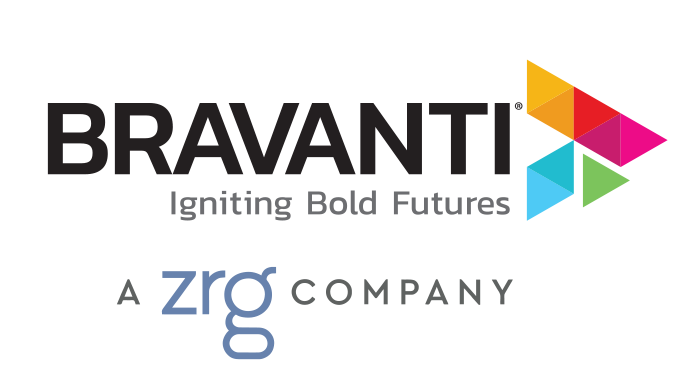By Amy Geltner
As a senior talent leader at a large consulting firm, Pam was tasked with increasing retention among high performers, specifically women in mid-level leadership positions.
Despite concerted efforts, the organization had continued to experience high attrition rates among this group. Pam decided it was time to establish a program that would amplify their retention efforts and brought in our team to design a career development program to prepare the high potentials for advancement to more senior leadership positions.
The program involved two, two-day workshops focused on specific skills and expertise relevant to the firm’s leadership competency model. The format was interactive and experiential, including activities such as videorecording and feedback, role plays, small group breakouts, large group discussions, and “fireside chats” with senior leaders.
The program has been a resounding success. Over the course of eight years, 117 women participated in the program. During that time frame, only nine participants left the company (a retention rate of 92.3%). By investing in their high potentials’ professional development and career trajectory within the company, our client was able to successfully curb attrition of top talent, all while improving its leadership pipeline, employee morale, and loyalty.
Many leaders are in a similar position as Pam, especially as budgets tighten amid shifting economic winds. Improving retention, especially among high performers, is continuous endeavor. It’s worth noting, however, that employee turnover is a natural, unavoidable part of business. And in the right circumstances, healthy turnover rates can actually improve organizational performance.
It’s when turnover rates aren’t healthy, and when those departures include high performers, that attrition becomes a real problem. And high performers are in higher demand, wielding more bargaining power, than ever before.
According to a recent report, 47% of high performers left their companies in 2021. That’s a staggering amount of movement—but it doesn’t have to be your reality.
With retention strategies that prioritize professional and leadership development, advancement opportunities, burnout prevention, flexibility, recognition programs, and fair compensation, you can keep high performers engaged and committed for the long run. I share more on this below, but let’s first take a look at the very real costs of losing your top talent.
The Short-Term Costs of Losing High Performers
It’s easy to assume the costs of turnover are high, but some of the statistics might surprise you:
- Turnover costs have nearly doubled in the past 10 years.
- More than 77% of voluntary turnover is preventable.
- The average cost to replace a full-time employee is between 1.5 and 2 times the employee’s annual salary.
- The average time for a new hire to reach full productivity is 6-8 months.
- Burnout is often reported as one of the top reasons for voluntary turnover, and burnt out employees are twice as likely to convince their coworkers to resign with them.
Now, consider that these are turnover statistics are for all employees, not just top talent. When it comes to losing high performers, there is very little research to know the true costs of attrition. However, we do know how much top talent can impact an organization while they’re employed:
- High performers are up to 400% more productive than the average employee.
- In high-complexity roles, high performers are up to 800% more productive than the average employee.
- High-performing employees have up to 20% larger internal networks than their peers.
- The top 5% of employees produce 26% of output.
- High performers invest as much as 20% more effort than other employees.
As Scott Keller of McKinsey outlines:
“Suppose your business strategy involves cross-functional initiatives that would take three years to complete. If you took 20 percent of the average talent working on the project and replaced it with great talent, how soon would you achieve the desired impact? If these people were 400 percent more productive, it would take less than two years; if they were 800 percent more productive, it would take less than one.”
Attracting and Retaining the Right Talent, McKinsey
Once you factor in the loss of high-performing employees, the organizational cost is downright staggering.
The Long-Term Costs of Losing High Performers
If the aforementioned short-term costs of losing high performers isn’t reason enough to invest in retaining your top talent, consider some of the long-term costs:
Losing Depth in Your Leadership Bench
As top talent leave, so do your best leadership prospects. According to Gartner’s Improving Leadership Bench Strength report, filling senior leadership roles with external candidates is more expensive, takes longer, and has a higher chance of failure. With some research identifying high potentials as three times more likely to succeed as future leaders, high attrition rates among top talent can have lasting effect on organizational performance for years.
Declines in Overall Performance and Productivity
Employee turnover naturally reduces productivity and performance as workload is redistributed temporarily or, in many cases, indefinitely, among remaining team members. Whether through increased pressure, overwhelm, or burnout, work overload can lead to a 68% decline in productivity. And when those exiting employees are high performers, the loss in output is often far greater.
Shifts in Morale
Voluntary employee departures of any kind may have lasting effects on the remaining workforce. Research show that workplace connections are integral to an individual’s sense of job satisfaction. And when those departures include high performers, it can cause other top talent to question whether they should also consider their next career move.
And when you consider the direct correlation between morale and performance, retaining top talent can actually help to bolster performance among other talent and improve overall team performance.
Tips for Retaining Top Talent
While turnover is a natural and unavoidable element of business, losing your high performers can be a challenge that takes years to overcome. However, by integrating a few intentional elements into your retention strategy, you can help keep top talent happy and engaged.
Invest in Professional Development
A recent report from TalentLMS and SHRM revealed that 76% of employees are more likely to stay with a company that offers continuous training opportunities. High performers aren’t the type to simply check a box—they want to do and be more—and they will seek out employers who support their career aspirations.
Fortunately, professional development is an investment that benefits both employee and the organization, with the LinkedIn 2022 Workplace Learning Report revealing that “opportunities to learn and grow” is the top driver for workplace culture, among other benefits. Furthermore, top performers are the lifeblood of any organization, often seeking more responsibility and leadership opportunities, consistently adding value and contributing to the business’ strategic initiatives.
Attract and retain high performers by designing your learning and development initiatives to offer unique and diverse growth opportunities. In addition to typical skills-based training opportunities, consider leadership development training, coaching, mentorship programs, high-potential cohorts, and other targeted learning opportunities that encourage and further develop top talent.
Provide Advancement Opportunities
Like professional development, internal mobility and career pathing are a significant focus area for high performers. In fact, LinkedIn found that companies that excel at internal mobility have employee retention rates are nearly twice as high as those that don’t (5.4 years versus 2.9 years).
In addition to integrating career pathing into individual development plans, provide opportunities for top talent to participate in developing the strategic vision of the company. Illustrate their future within the company while allowing them to shape what that future looks like and you’ll be one step closer to keeping your high performers engaged and loyal.
Recognize and Reward High-Performing Talent
Recognition is a basic human need: we want to be acknowledged for our contributions, and the science proves it. One survey found that organizations with recognition programs have 31% lower attrition rates and 12 times as likely to have strong business outcomes than those who don’t. Another survey found that 40% of employees say they’d put more energy into their work if they were recognized more often.
These findings aren’t surprising yet standardizing and scaling recognition programs remains a challenge for many organizations. This is often because recognition is considered to be an “HR thing” when in reality, the simplest and best opportunity for recognition lies within teams and between supervisor and direct report. Establish a standard for actively acknowledging and rewarding (whether financially or in other ways) the hard work and successful outcomes of your top performers to keep them from exploring other career paths.
Compensate Appropriately
For the past decade or so, organizations have amplified non-financial compensation and benefits as a means of attracting and retaining high performers. Free snacks, weekly social events, and ping pong tables became the go-to recruitment calling card, mostly based on studies that revealed younger generations had a higher demand for work-life balance, development opportunities, and employer social responsibility than older generations.
However, the demand for competitive financial compensation is still tantamount for high performers, especially during today’s historic inflation rates and rising cost of living. PwC’s 2022 Global Workforce Hopes and Fears Survey found that 71% of participants cite fair financial compensation as the most important factor in whether to seek out a new job, more so than job fulfillment, flexibility, or workplace connection. So, instead of investing in arbitrary perks that may or may not appeal to high performers, review your compensation packages against industry standards to ensure they’re competitive in the market.
Offer Flexibility
High performers have their pick of employers and recent studies show that the ability to work remotely and/or during flexible hours is a top job search criteria for top talent. This is especially true among Millennials and Gen Z employees, the next generation of leaders.
Work with employees to identify what flexibility benefits they would like to have and integrate what you can into your workplace culture. As challenging as this may be for some organizations, the benefits of retaining top talent will likely outweigh the downsides.
Address & Prevent Burnout
A 2021 report shows that 40% of employees who left their jobs cited burnout as their top reason for leaving. While workloads can’t always be reduced or redistributed, there are a number of ways organizations can address and prevent burnout before it ever happens. Examples include creating a culture where employees feel safe to express that their workload concerns as well as prioritizing work-life balance and wellbeing.
A Final Note on Retaining Top Talent
The benefits of retaining your high performers can’t be overstated. Top talent who are “bought in” bring immense value to the organization in many tangible and intangible ways. Their engagement and motivation can be contagious, helping to lift overall morale, while their long-term vision can help to shape the future direction of the company. Retaining high performers also has a compounding effect as their insights and feedback can reveal ways to attract and retain more top performers like them.
Given the benefits of retaining top talent, the effort needed to improve retention rates will be well worth it today, tomorrow, and for years to come.
Interested to learn more about how Bravanti can help you you’re your high performers happy and engaged? Book a complimentary consultation today!
Content Related to Prioritize Retaining Top Talent: The True Cost of Losing High Performers
Recession Proof Your 2023 Talent Strategy
Internal Mobility in the Age of Attrition: Improving Retention Through Career Transparency
Workplace Burnout: How to Spot It and What to Do About It
Learn more about Bravanti’s Leadership Development solutions

